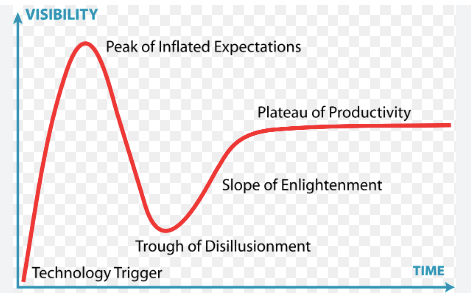AI is rising to the fore and most certainly finding its momentum in 2025, as we can observe from Prime Minister Keir Starmer’s strong commitment to this technology as he recently unveiled his AI action plan.
At Marmamlade Marketing, we’re finding that recruitment businesses and marketers are certainly eager to invest in this technology but are finding themselves slightly overwhelmed and sometimes unable to truly get to grips with and maximise its potential for success.
After speaking to several of our clients we were able to build a clearer picture of their feelings around AI. They understand that it has the power to revolutionise their work but there are some questions, issues or concerns that still need answering, primarily around:
- Governance and ethics: They are the processes, policies and tools that ensure AI is built, used and managed responsibly. Yes, AI can improve efficiency and innovation, but it can also introduce risks to accountability and transparency. AI poses significant challenges for regulators in a wide number of areas, with different countries taking divergent approaches, which is why some of the lines are still blurred in this area of AI.
- The EU Act: The EU AI Act is a European Union regulation that establishes rules for the use of AI. It came into force on August 1, 2024 and aims to reduce administrative and financial burdens for businesses and ensure that AI systems respect fundamental rights, safety, and ethical principles. Yes, it’s a sweeping piece of legislation targeting the risks posed by the fast-moving technology but as this is so new, its long term efficacy is yet to be seen.
- The Bletchley Declaration: Introduced in 2023, the Bletchley Park Declaration is the first global pact on tackling frontier AI risks and it reflects a high-level political consensus and commitment among the major AI players in the world. Some have argued that while it’s heavy on vision, light on detail, and it is likely that the “devil will indeed be in the detail”.
- New AI-related roles: It’s worth asking whether we’ll see the appointment of Chief AI Officers and Chief Data Scientists who will ultimately be responsible for the implementation and delivery of AI across businesses and industries. To do well in an AI-driven world, workers will need to know how to use and understand AI tools but skills like creativity, critical thinking and emotional intelligence remain vital. The workforce will also need to be adaptable and committed to always learning. These qualities will help them stay ready for changes in technology and job requirements but businesses will need to invest in order to have strategies in place to help their workers achieve their AI career goals.
- AI data privacy issues: This is a massive issue in B2B marketing. CRM data is often out of date or labelled incorrectly, so it's impossible to interrogate or find real value to add to the bottom line. AI data privacy issues can also include data collection, cybersecurity and bias. These issues can lead to unauthorised access to personal information, data collection without consent and unfair treatment of certain groups of people.
- The future of synthetic data: This is going to be the next big thing, where this 'AI-engineered' data supplements real data. The positive use of synthetic data is that by feeding it into large language model data, this helps to overcome any bias that might exist. However, synthetic data can result in model collapse as it's too far removed from actual true data and would be iterating on information that isn't actually true or accurate.
- AI black box versus AI white box: Black box AI is where AI produces insights based on a data set, but the end-user doesn’t know how. Machine learning programs reach conclusions from the data inputted, but it’s not clear how the program came to them. In contrast, white box AI is transparent about how it comes to its conclusions. A data scientist can look at an algorithm and understand how it behaves and which factors influence its decision-making. Both white box and black box AI have unique strengths and differences. As a result, you can’t necessarily say one is better than the other in every circumstance. Many machine learning endeavours today try to balance the two to achieve both interpretability and accuracy.
To help make sense of any changes and uncertainties when it comes to AI, we’ve developed our very own AI maturity model, which is essentially a north star to show what a business's capabilities are in order to unlock their full potential.
This is derived from the AI Hype Cycle, a model devised by US tech research firm Gartner that shows the maturity, adoption and business impact of AI technologies.

Organisations can use the hype circle to understand where different AI innovations are in the adoption process, why innovations are in a certain place in the adoption process and how innovations fit into the overall AI landscape.
In order to navigate the AI Hype Cycle, organisations can:
- Develop guidelines and policies for responsible use
- Monitor the technology's progress and industry developments
- Adapt their strategy as the technology matures
- Budget wisely
- Establish key performance indicators (KPIs) to measure the technology's impact
- Consider alternative solutions
Using these principles, our AI Marketing Maturity Model - which we have coined the Definitive 8-Step AI Implementation Strategy - shows how recruitment businesses can integrate AI-powered tools into their operations to significantly enhance their efficiency and create new opportunities for growth.
However, it's important to note that the effectiveness of these platforms may vary depending on the specific needs and context of each business. Recruiters should carefully evaluate each tool's features and potential impact before implementation.
Here’s our 8-step guide on how to achieve this:
- Assess Current State: Evaluate existing recruitment processes and tech stacks to identify areas where AI can have the most significant impact in order to evolve and get the maximum benefit out of them.
- Set Clear Objectives: Define specific goals for both efficiency improvements and growth opportunities.
- Prioritise Implementations: Start with AI solutions that offer the highest potential return on investment.
- Invest in Training: Ensure staff are well-trained in using and interpreting AI tools.
- Start with Pilot Projects: Test AI implementations in controlled environments before full-scale deployment.
- Monitor and Refine: Continuously assess the performance of AI systems and refine them based on outcomes.
- Ensure Compliance: Stay updated with regulations regarding data protection and ethical standards in AI use.
- Foster a Culture of Innovation: Encourage staff to embrace AI as a tool for enhancing their capabilities, rather than replacing them.
This model is underpinned by trends which we’re currently seeing dominate the recruitment marketing space. They include:
- AI-Powered Marketing Intelligence
- Evolving Automated Social Media Tools
- Personalised Email Marketing Campaigns
- AI-Driven Content Creation
- AI-Boosted Competitor Analysis
Ultimately, in recruitment, AI software and platforms need to process vast volumes of data, to ensure a seamless and quality client and candidate experience at every touchpoint. By integrating AI-powered tools into their operations and across their websites, recruitment businesses and marketers can significantly enhance their efficiency while creating new opportunities for growth, while offering a much improved candidate and client experience.
After all, we’ve heard countless times over the years from candidates that they feel like they're ignored or not important because they don't get a response from a recruitment business. AI will solve this.
Micro marketing and personalisation IS the future and AI will enable this. This, in turn, builds trust and confidence in your active and passive audiences. Remember, 95% of the time your audience may not be ready to buy or move jobs, but you'll be at the forefront of their minds, standing out in a saturated market because of intelligent, targeted communication and outreach.
The key is to view AI not just as a tool for automation but as a strategic partnership - working in harmony with people power - when it comes to decision-making and business expansion.
To support this, our MD Jo Perrotta chaired a 90-minute panel discussion for the Department for Transport February 5 at the Manchester Conference Centre. There, delegates talked about how organisations can to unlock the potential of AI to build a stable and secure ecosystem in clear steps:
- Accessing quality data and creating trustworthy data frameworks
- Overcoming barriers to AI adoption
- Updating software, infrastructure and applications to meet current and future needs
- Attracting AI project management and technical talent
- Showcasing today's impactful and successful transport AI use cases
To find out more about how AI can empower your business in 2025 and beyond, give Jo a call and she’ll be only too happy to talk you through the finer details: jo@marmalademarketing.co.uk

.jpg) Jo Perrotta
Jo Perrotta




